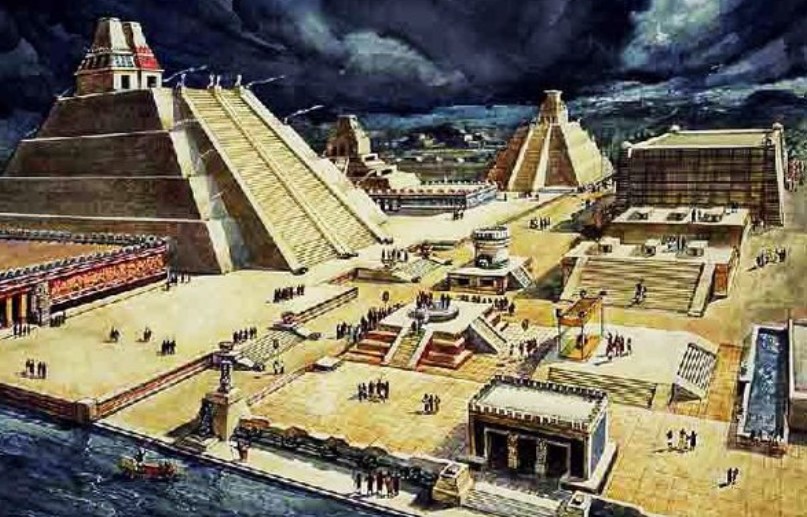Here are several reasons to study the history of pre-Columbian America-
1. Understanding Human Civilization-
Pre-columbian America was house to various advanced civilizations like the Maya, Aztecs, and Incas who developed worldly social, political, and economic systems. By examining their history, we acquire a vision of the assortments of human experiences, their achievements, and adjustments in several regions of America before European contact.
2. Challenging Eurocentric point of view-
The history of pre-columbian America aids challenge Eurocentric stories that usually be in charge of historical accounts. By examining the rich and complicated cultures that continued before European colonization, we acquired more detailed information and an understanding of global history and identify the contributions of native peoples.
3. Preserving cultural heritage-
Several native cultures and traditions in the Americas were extremely affected by the colonization and following historical events. Learning Pre-columbian history permits us to value and preserve the cultural heritage of these societies, making sure that their knowledge, art, and practices are not lost to time.
4. Environmental Insights-
Pre-columbian civilizations have substantial knowledge of their local environments and developed viable agricultural practices, engineering marvels, and complicated urban planning. By evaluating their strategies for managing natural resources, we can understand precious lessons regarding sustainable living and ecological management.
5. Appreciating cultural diversity-
Pre-columbian America was extremely diverse, with a multitude of different cultures, languages, and belief systems. Studying this history permits us to appreciate the cultural diversity of native peoples.
What is pre-columbian America?
Pre-columbian means to the historical civilizations that lay in the Americas prior to the coming of Christopher Columbus in 1492. It encloses a wide long duration, spanning 1000s of years, and consists of diverse cultures and civilizations.
The Americas were inhabited by several native peoples who had developed complicated societies, cultures, and civilizations. These civilizations developed in regions like Mesoamerica (present-day Mexico and Central America), the Andean area (present-day Peru and Bolivia), North America, and the Caribbean.
A few of the remarkable pre-Columbian civilizations consisted of the Olmec, Maya, Aztec, Inca, Moche, and Cahokia. Each and every civilization had its individual special cultural, social, political, and economic features. They developed worldly agricultural practices, construct monumental architecture, had modern knowledge in mathematics and astronomy, and made complex art and writing systems.
The pre-columbian societies had varied political formations, differing from cities, states, and empires to decentralized chiefdoms. They engaged in huge trade networks, consisting of long-distance trade, and had complicated social hierarchies. Religion played an important role in their lives, and few of these civilizations explained religious faiths and rituals.
What Are the Best way to Learn Pre-columbian America?
There are various effective ways to learn and explore the rich and diverse Pre-columbian period. Here are some of the suggested steps:-
1. Read Books and Academic Sources
Begin by reading famous books, scholarly articles, and educational publications on Pre-columbian America. Look for works by honored historians and archaeologists who have massively researched the topic. A few of the remarkable authors consist of Charles C. Mann, Jared Diamond, and Michael D. Coe.

2. Visit Museum and Exhibitions
Museums usually have dedicated parts or exhibitions primarily focused on pre-columbian civilizations. Visit the museum and look for specialized archaeology or ancient history to look for the artifacts, artworks, and reconstructions from these cultures. You can also engage with guided tours or audio guides to acquire in-depth knowledge and understanding about it.
3. Take online courses
Various online platforms provide courses particularly focused on Pre-columbian America. Websites such as Coursera, edX, and Udemy host courses taught by famous scholars and archaeologists. These courses give a structured learning experience with lectures, reading, and quizzes, to increase your knowledge.
4. Research Archaeological Sites
Visit pre-columbian sites in person, if possible. The ruins of civilizations such as the Maya, Aztecs, Incas, and various others provide a tangible connection to the past. Observing the architecture, cities, cultures, and leftovers can be an extremely enriching experience.
5. Watch documentaries and films
Documentaries and Films can give you a visual representation of Pre-columbian America and aid you to grasp its complications. Look for documentaries pn famous channels such as National Geographic, PBS, or the BBC, which usually provide perceptive and thorough content.
Why do we want to learn the history of pre-columbian America?
Here are several important reasons to learn the history of Pre-columbian America-
1. Cultural Understanding
Pre-columbian America was house to varied civilizations, like the Aztecs, Mayans, Incas, and several others. Researching their history helps us to know their cultures, beliefs, customs, and achievements. It gives in-depth into their social, political, economic, and religious systems, providing us with a wider understanding of human history and diversity.
2. Human Achievements
Pre-columbian civilizations made notable advancements in different fields. Studying their history permits us to respect their architectural marvels, agricultural practices, artistic creations, and scientific knowledge. For instance, the Mayans developed a complex calendar system and made remarkable contributions to mathematics and astronomy.
3. Environmental effect
Learning about pre-columbian civilizations aids us to understand their relationship with the natural environment. Several native communities had sustainable agricultural practices, utilized advanced irrigation systems, and lived in harmony with their surroundings. By inspecting their techniques, we can acquire in-depth into sustainable practices that may be applicable today.
4. Historical Perspective
Knowing Pre-columbian history gives context for the European colonization of the Americas. It enlightens the native population’s interactions with European discoverers, the influence of colonization, and the succeeding establishment of new societies. It permits us to check the complications of power dynamics, cultural clashes, and long-term impact on native communities.


